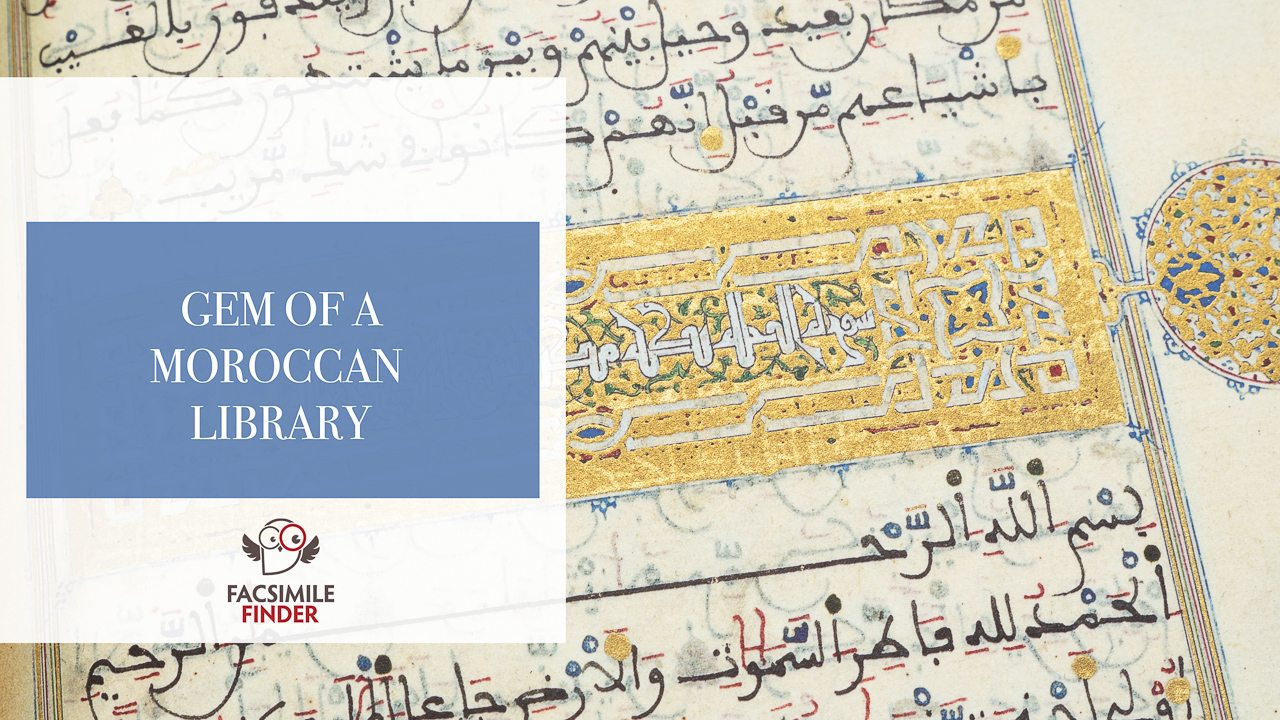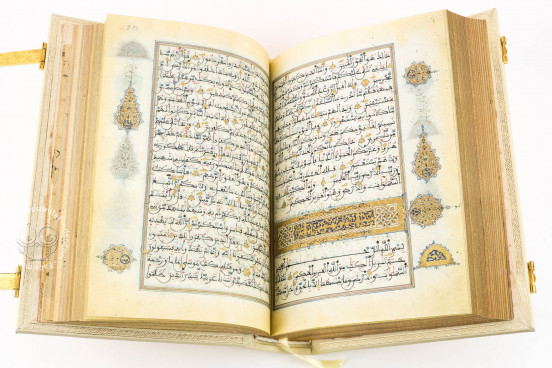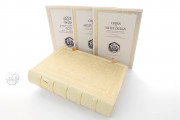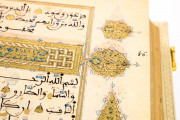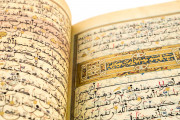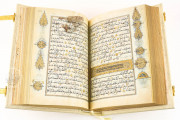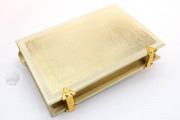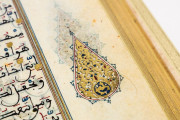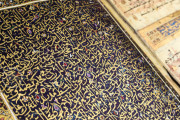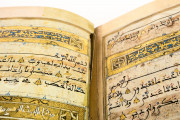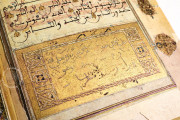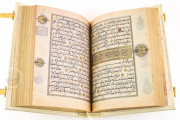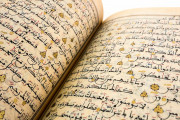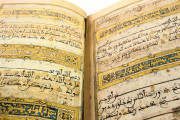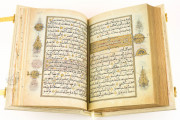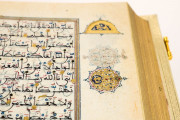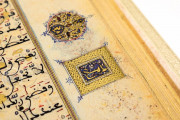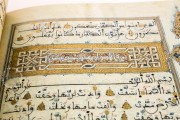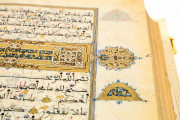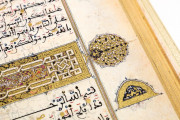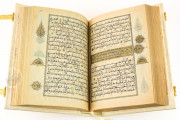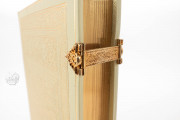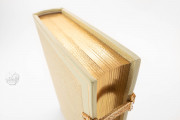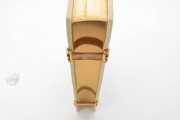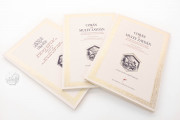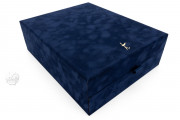Sultan Zaydan's Koran is an exquisitely beautiful manuscript of the sayings revealed to Muhammad, the Prophet of Islam, created in 1599 for Aḥmad al-Manṣūr, Sultan of Morocco, at his palace in Marrakech. The book opens with a pair of facing pages given over entirely to intricate geometric and foliate designs and closes with two equally grand ornamental pages. The manuscript was transported to Spain as a part of the library of al-Manṣūr's son, Zaydān, also Sultan of Morocco.
The Koran ("recitation") is the Islamic book of scripture, understood as the word of God transmitted to the Prophet Muhammad. Serving as a guide for practicing the Muslim faith, it comprises 114 suras (chapters), which vary in length from just a few verses to pages long.
Rich Decoration
Both the frontispiece and finispiece spread across two facing pages in symmetrical designs (fols. 1v-2r and 264v-265r). Each page has a round pattern of white interlace on a gold ground centered on a small six-pointed star with foliate decoration in gold on blue. Above and below are rectangular fields of floral and foliate motifs in blue, red, gold, and white. More interlace and foliate decoration embellish the painted frames, which feature scallop-shaped protrusions into the outer margin.
Rosettes Mark Suras
Every page of Zaydan's Koran is a feast for the eyes. Each page has a painted frame of two thin bands of gold accentuated with bands of red and blue ink. The outer margins host from one to five decorative ornaments of interlace designs in the shapes of circles, half-circles, and teardrops. A rosette in the outer margin marks the beginning of each sura.
A Variety of Scripts
The main text is written in Maghribi, the angular Arabic script characteristic of North Africa. Vocalization and diacritics are in red and blue, respectively. The titles of the suras are in Kufic, a handsome angular script. These titles are written in gold on deep blue grounds or white on gold grounds decorated with floral motifs.
The colophon recording the circumstances of the book's creation occupies a framed page of calligraphy (fol. 264r). It is written in the round Naskh script entirely in gold intertwined with a spiraling gold vine sprouting red and white rosettes and leaves, all on a brilliant blue ground.
Decorative Crescendo
Because the suras of the Koran are arranged, except for the very first, from long to short, the density of painted ornamentation in Zaydan's Koran increases toward the end of the book, as the suras become shorter and their decorative headpieces bearing the titles closer together. The decorative climax comes in a golden text panel filling a third of a page (fol. 263v), the full-page colophon, and the final opening devoted entirely to ornament.
Part of a Storied Library
Zaydan's Koran is one of 4,000 manuscripts in the library of Zaydān, Sultan of Morocco, that were transported to Spain in 1614, destined for the library at El Escorial. It is bound in brown leather over boards with gold tooling featuring the library's insignia with the grid of Saint Lawrence at the center.
We have 1 facsimile edition of the manuscript "Sultan Zaydān's Koran": Corán de Muley Zaydán facsimile edition, published by Testimonio Compañía Editorial, 1996
Request Info / Price
